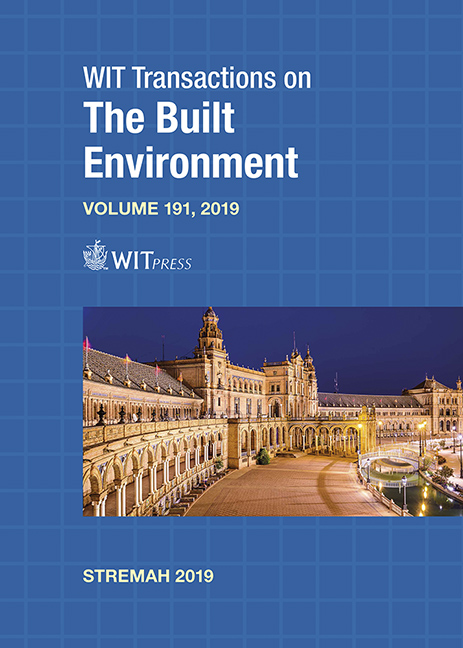PLANNED AND UNTOLD STORY OF THE CITY’S ARCHITECTURE: THE PRE-INDUSTRIAL PLAN FOR THE RIVERSIDE BOUNDARY OF LISBON, PORTUGAL – MATERIALIZED AND REMAINING ASPECTS OF CARLOS MARDEL’S PLAN FROM 1733
Price
Free (open access)
Transaction
Volume
191
Pages
12
Page Range
85 - 96
Published
2019
Paper DOI
10.2495/STR190081
Copyright
WIT Press
Author(s)
ARMÉNIO DA CONCEIÇÃO LOPES, CARLOS JORGE HENRIQUES FERREIRA
Abstract
Vitrúvio establishes at DeArchitectura the principles of design and port construction to serve the city in nautical, commercial, warlike and architectural terms. Alberti retakes the concept and extends it. As far as we know, Lisbon never possessed, during classical antiquity, a port worthy of that name, as Vitruvius described. The justification for the absence of a port’s structures can be due an exceptional characteristic as the natural anchorage – ships are protected in Tagus even in stormy days, away from the sea. Here only the tides have effect, by the minor winds and curling/ripples, not obliging thus to the design/construction of the port as it happens in other maritime cities. The Tagus is a pleasant cove – “Olisipo”, interior sea. Francisco de Hollanda planned the city in accordance to the river, assuming it as an essential raw material of the locus. The image of the city is strongly linked to the aquatic environment. Tagus’s importance to the city is reinforced by Frei Nicolau de Oliveira in the “Lisbon Book of Greatness” – a strategy relocating peninsula’s capital to Lisbon; citing the Emperor Charles V: “If I had been King of Lisbon, quickly I would be of the world”. Following the words of King Charles V (I of Spain), King Philip II promoted works in view of Tagus’ navigability, intending to link Madrid to the Atlantic. It was up to the architect Carlos Mardel, the delineation of the desires of the Portuguese monarch, King D. João V, to create the “Atlantic-Rome”. The new plan, for the riverside front of Lisbon, redesigned the land-water frontier, suggesting a modern image and new port infrastructures. It was interrupted abruptly by the earthquake in November 1, 1755, and it erased, from the urban history of Lisbon what would be the largest pre-industrial plan for the city – one of the greatest for Europe at the time.
Keywords
Lisbon, Carlos Mardel, preindustrial plan, pre-earthquake plan of 1755, riverfront architectures, maritime city planning, water city design




